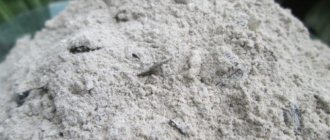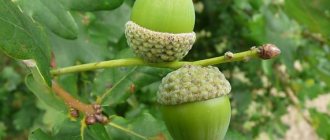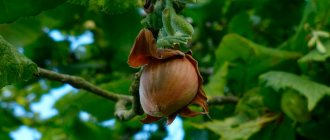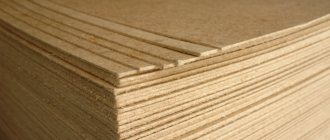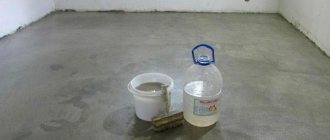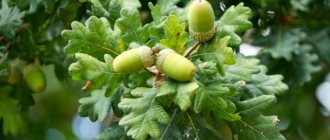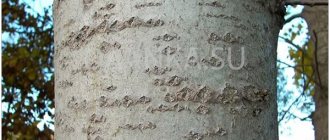Wood ash is a residue of mineral impurities formed during the combustion of wood or plant materials. It is a brown powder with fragments of charred branches. Ash contains a large number of useful compounds, which allows it to be used as a natural fertilizer. At the same time, it is an environmentally friendly substance that can be obtained independently using agricultural waste.
HOW TO CHOOSE ASH?
Not every ash is beneficial for plants. If you burn household waste with a large amount of painted boards coated with varnish, as well as paper products, such as newspapers, magazines, boxes, then such combustion products will only cause harm. Such ash contains a large number of chemical compounds. More details can be found in the article: Ash - benefits and harm
However, even when burning residues of natural origin (branches, firewood, peat, etc.), ash is obtained with varying degrees of benefit. For example, wood from species such as linden, spruce, aspen, and other soft varieties contains a lot of calcium.
At the same time, harder wood species (oak, larch, birch, poplar, etc.) make it possible to obtain ash, which is rich in potassium. Fertilizer with this composition can be obtained by burning herbaceous plants: sunflower stems, potato tops, nettles, buckwheat.
On a note! Ash from trees growing near roads, chemical plants and other unfavorable areas is not the best product for feeding plants. It will contain a high content of harmful chemicals.
Varieties and methods of obtaining
Let us immediately note that not all ash is suitable for use. If you take combustion waste from food or household items, then this is immediately taboo. They do not contain any useful elements.
Food waste is partially useful. So potato peelings will bring a number of positive aspects. But newspapers, magazines or pieces of building material (even wood) are already harmful. They have:
- dyes, varnish;
- paints and impregnations;
- glue, chemicals.
After processing the plant material, the substances are obtained with different compositions. Even when burning softwood trees, there is less calcium than in hardwood, and there is more potassium in young wood than in old wood.
By adding sunflower or buckwheat tops, the farmer receives a new type of fertilizer. A number of tables will help with this, which indicate the main batteries.
Need to know! Do not confuse ash with ash. The composition, as well as the benefits of the two substances, are different. Therefore, before starting work, it is worth carefully studying the properties of each substance separately and its effect on the plant/crop.
Woody
One of the most popular types of ash. It's the easiest to get. It is enough to collect a certain number of branches, bark of one or well-combined tree varieties.
In this type of ash, a larger percentage of useful substances is calcium. Then potassium and phosphorus. You can always adjust the composition if you take into account the type of wood and age. Use wood ash to regulate soil acidity.
WHEN DOES ASH DO HARM?
Ash is also known for its excellent ability to reduce soil acidity. However, it is precisely this property that makes ash unsuitable for:
— fertilizing plants that love acidic soil (these include hydrangea, lingonberry, azalea, etc.);
— soil that is already oversaturated with a high alkali content;
- soil that was enriched with nitrogen-containing fertilizers (bird droppings, manure, etc.) no more than a month ago.
Improper use of fertilizer can harm the garden
Any summer resident knows: ash is an indispensable assistant in growing many plants in the garden. Its main advantage is its accessibility: you can always set fire to excess branches and quickly obtain fertilizer.
Wood ash promotes the growth of tomatoes and cucumbers, but can cause irreparable harm to some crops. There is no need to use it everywhere - since ash reduces the acidity of the soil, plants that, on the contrary, prefer acid, may not grow.
Read more in the article: Using wood ash in the country
Watermelons
If you decide to grow watermelons on your plot, then you do not need to use ash as fertilizer. Otherwise, they may begin to crack, rot and stop taking in water. Due to feeding watermelons with ash, I lost almost my entire harvest, although before that there were no problems with the growth of melons.
Sorrel
Even if the sorrel grows after feeding with ash, this does not mean that it will be good. After the fertilization procedure, it may lose its taste and stop growing. As a result, it will take a long time to restore the harvest.
Radish
Fertilizing with ash harms not only the growth of radishes, but also its taste. The fruits grow small, with a yellowish tint and, as the author notes, the taste of the fruits is not delightful.
Hydrangea, blueberries and blueberries do not like feeding with ash. But cabbage, currants and cherries will please you with a good harvest if you fertilize them with ash bait.
Composition of the mineral part
The use of wood ash promotes the active absorption of mineral substances by plants immediately after application. Organic fertilizers must first rot.
The chemical composition included mixtures of salts of alkali, alkaline earth metals and iron, belonging to broad groups of carbonates, sulfates, phosphates and silicates. Externally, it has a color ranging from white to gray, sometimes containing “rusty” inclusions due to the presence of ferrous compounds in the composition.
Properties of mineral components
Wood ash in the form of fertilizer is relevant for most garden and indoor plants. Its components in the form of a solution have a complex effect on the development of fruit and berry trees, shrubs and indoor plants.
Chemical composition:
- Calcium is the main growth stimulator, especially necessary when plants gain green mass.
- Sodium is an element that activates a number of enzymes that are indifferent to the presence of other elements in the ash residue. It normalizes the water balance of cells and ensures alkalization of the soil.
- Potassium maintains the alkalinity of ash solutions and promotes the growth of garden crops and indoor plants.
- Phosphorus is necessary for the normal functioning of heat-loving plants such as grapes. In order for this element to actively pass into the soil from solution, the latter must be stirred periodically, since orthophosphates quickly precipitate to the bottom of the container.
- Magnesium is part of the chemical composition of chlorophyll, which is involved in the production of oxygen.
- Silicon comes in the form of silicates and helps cells stick together. Its beneficial properties include increasing the digestible proportion of microelements contained in the soil.
Table 1: Contents of main elements
| Ash | Contents of the main elements | ||
| phosphorus | potassium | calcium | |
| Hardwood | 3,5 | 10,0 | 30,0 |
| Coniferous | 2,5 | 6,0 | 35,0 |
| Peat | 1,2 | 1,0 | 20,0 |
| Dung | 4,8 | 11,3 | 8,5 |
| Cereal straw | 4,0-8,0 | 10,0-20,0 | 4,0-8,0 |
| Buckwheat straw | 2,5 | 30,0-35,0 | 18,5 |
| Sunflower stems | 2,5 | 36,0-40,0 | 18,0-19,0 |
| Slantsevaya | 0,5-1,5 | 1,0-1,5 | 65-80 |
In addition to the main components, more than 30 elements were found in the ash that are involved in the life processes of fruit and ornamental crops . Their properties appear at different stages of development. They help maintain a healthy appearance and prevent the death of foliage, fruit and root systems.
HOW TO USE ASH?
When planting trees, ash can be applied in a ratio of 1–2 kg of fertilizer per planting hole. When planting garden and vegetable crops, it is applied in the amount of 10 g per hole. Even in such small doses, ash will be of great benefit and will become a reliable basis for the adaptation period of plants and their active growth.
It can also be used in clay or loamy soil in the fall. In spring, ash will be an excellent fertilizer for light sandy loam and sandy soil. Ash brings the greatest benefit in heavy and podzolic soils, where there is a great need to reduce acidity.
It is strictly not recommended to mix ash with fertilizers high in nitrogen and minerals, for example, bird droppings or superphosphate. In this combination, the fertilizer components are neutralized and do not have the desired effect on the soil.
What it is?
Ash is a solid residue that is obtained as a result of the combustion of any plant material: wood, grass stems, leaves, tops, straw, peat, dung, charcoal.
It is impossible to determine the exact chemical composition of ash, the percentage of elements in it, or a universal formula, since it greatly depends on the raw materials from which it was obtained. Even from the same variety of plant, but of different ages, ash of different composition will be obtained.
In any case, ash contains a mixture of salts of carbonates, phosphates, silicates and sulfates of active metals (sodium, potassium, magnesium, calcium, as well as ferrous compounds). In addition, it contains the following microelements necessary for plants:
- manganese;
- molybdenum;
- silicon;
- sulfur;
- zinc;
- iodine;
- boron and others.
Types and composition
DI. Mendeleev devoted more than 40 years to agricultural issues. While doing agrochemical research on his Boblovo estate, he developed an optimal regime for the use of organic and mineral fertilizers for grain and garden crops in central Russia.
He proposed the basic composition of ash obtained from the combustion of wood, and identified the key substances:
- Calcium-containing substances (from 12 to 17% each): calcium carbonate CaCO3, calcium chloride CaCl2, calcium silicate CaSiO3, calcium sulfate CaSO4;
- Potassium salts (about 13%), mainly potassium orthophosphate K3PO4;
- Magnesium-containing compounds (4% each): magnesium carbonate MgCO3, magnesium silicate MgSiO3, magnesium sulfate MgSO4;
- Sodium salts (up to 15%): sodium orthophosphate Na3PO4, sodium chloride NaCl.
Coniferous wood contains more calcium, while deciduous wood contains more potassium. Pine needles, rye and wheat straw, when burned, produce a high percentage of not only potassium, but also phosphorus.
Apply nitrogen at the same time
This excellent potash fertilizer is used to feed indoor plants. However, it does not contain nitrogen, which plants need during the growing season. Therefore, ash should be used together with nitrogen fertilizers at the rate of 100-150 g per 1 square meter. m, but you shouldn’t add it at the same time. When used in this way, nitrogen quickly turns into ammonia and evaporates.
There is no chlorine in the ash, so it must be added to crops that are sensitive to chlorine, such as raspberries, red and black currants, strawberries, cucumbers, cabbage, zucchini, lettuce, peas and potatoes.
Using ash fertilizer for pepper and tomato seedlings
A simple, natural fertilizing with ash works incredible miracles with seedlings of tomatoes, peppers and eggplants. It contains more than 30 microelements that are extremely necessary during plant growth. In this case, it acts as a phosphorus-potassium fertilizer. Phosphorus is contained in the form in which the plant absorbs it best. Thanks to the substances that are in it, the seedlings begin to rapidly gain green mass and build up the root system, which ultimately affects a good harvest.
The time for feeding is when you pick up the seedlings. Immediately after picking, count down the week, and after that you can start feeding the seedlings. If picking is not provided, then focus on the appearance of the second pair of true leaves. It is too early to feed seedlings with seven-lobed leaves - you can burn the tender stems.
- Before fertilizing, the soil in seedling cups or boxes is well moistened,
- then ash is sprinkled around the edge of each seedling at the rate of ¼ teaspoon per seedling.
- Pour a layer of dry soil on top of it. This will allow the soil to remain breathable and prevent blackleg from developing.
- After this, place the seedlings in the brightest place on the windowsill.
If during the feeding process ash gets on the leaves of the seedlings, shake it off or blow it away, otherwise, under the influence of the sun or moisture, burns may form on the delicate foliage.
In this way you can feed not only tomato seedlings, but also peppers and eggplants. Such fertilizing for seedlings can be carried out 2 or 3 times before planting them in a permanent place.
Don't forget about the deoxidation property
Ash loosens the soil well and changes its structure. In addition, it is an excellent deoxidizer; the alkaline reaction reduces acidity if it is excessive. This fertilizer should be used with caution on soils with alkaline and neutral pH levels.
Determine the acidity of the soil simply. Take some soil from a depth of about 5 cm and 1 tsp. dissolve in ⅔ glass of boiled water, add 1 tbsp. l. ammonia, mix and let stand for a day. After the earth in the glass settles, the color of the solution will either be light, slightly cloudy, or darken.
A dark solution indicates increased soil acidity. Most plants are suitable for neutrals. The exception is plants such as rhododendrons and conifers. Ash application rates depend on the composition of the soil and how often organic fertilizers are used.
If you use ash as a deoxidizer, the amount depends on the acidity level and whether your soil is heavy or light. For example, if there is clay or peat soil, then add more; on average, this figure can reach 1.5 kg per 1 sq. m. m, if we are talking about wood ash, which we have to deal with more often. The ash remaining after burning grass or straw must be added even more, up to 3 kg, and if you fertilize the ground, you need to add 150 grams per 1 sq. m. m. After dry application, the soil must be loosened. You can also add it to planting holes during planting.
Pros and cons of using it to feed plants
Ash of any type is definitely beneficial for plants. With its help, they increase the yield, since the positive qualities are much greater than the negative ones.
With proper application and calculations, the soil structure improves, since ash is a special type of food for microorganisms.
The second plus is the composition with a predominance of potassium. This is extremely important to consider if the soil type is neutral or acidic.
Thanks to its composition, ash helps create ideal conditions for plants, namely for development and growth. And:
- helps strengthen the root system;
- develops the stem, making it stronger;
- helps to bloom abundantly and brightly;
- increases immunity;
- protection from pests and some infections;
- improves water balance;
- increases frost resistance.
Of the minuses, it is necessary to immediately highlight that the application should take place after checking the acidity and type of soil. Otherwise, instead of positive qualities, fertilizer has the opposite effect.
Store ash properly
You need to store ash in a dry place, do not let it get wet, because it may lose its properties. In a dry state, it is stored for a long time without losing its beneficial qualities.
What should I store it in?
To keep the ash at its best, you just need to make sure it stays dry. To do this, select any container. If it is a metal bucket or barrel, then it is better that it is rust-free. These can be plastic containers or plastic bags.
You can put together a special box, put several slats on top and attach a metal mesh to them. Through this kind of hole, you can immediately sift fine ash into a container for storage. Anything leftover will be stored in another container. And these larger fractions of ash can be used either in the fight against slugs or for preparing an infusion against pests. But this use of an ash box is acceptable in the summer, when you periodically visit the dacha. But for the winter it is better to cover such a box with a lid or film to prevent moisture from entering.
Where to store?
The most important condition for storing ash is a dry room. It doesn't have to be a country house. This could be a shower room, bathhouse, barn, but an important condition is that moisture from precipitation does not get into the container with ash.
Not only does precipitation compress the ash, but the ash also prematurely loses nutrients that will not reach the plant. Therefore, the main conditions for storing ash in winter are durable containers and dryness.
The benefits of mineral nutrition
Ash “works” more effectively in combination with other natural, organic soil fertilizers
The benefits of ash as a fertilizer are as follows. When entering it:
- acidic soil changes its composition from neutral or alkaline, which is necessary for most vegetable and garden crops;
- plants are quickly saturated with useful components, since they are contained in an accessible form;
- a whole “army” of pests dies;
- seedlings take root better and their adaptation to the external environment is painless;
- soil microorganisms decompose organic matter faster;
- fruiting of plants on heavy soils improves.
Wood ash works more effectively if you mix it with peat, compost, and humus before adding it. This combination reduces acidity and creates looser soil. Compost matures faster when ash is added to it in advance. The mixture is stored in compost heaps.
Macro- and microelements are included in the ash concentrate in the form of various salts: sulfates, carbonates, chlorides, silicates, orthophosphates, forming other chemical combinations. Salts and alkalis reduce the acidity of the soil, increasing the pH level.
Garden compost matures faster when ash is added to it.
Ash as a fertilizer has a number of advantages compared to other inorganic compounds. Ash properties:
- ease of preparation and low cost;
- environmental friendliness, safety for people and plants;
- replenishment of nutritional deficiencies;
- balanced composition;
- easily accessible to plants;
- suitable for most garden crops;
- shelf-life Unlimited;
- You don't have to worry about overdosing.
A product such as fireproof pieces of coal in ash also brings benefits. Its small fragments are an excellent fertilizer for flowers. Used in the substrate when planting cacti, orchids, aroids and succulents. This is an antiseptic that, in crushed form, is applied to places of cuts or wounds in plants, ridding unprotected areas of pathogenic microorganisms.
Deposit at the right time
You need to add ash at different times of the year and depending on the composition of the soil on the site. If there is clay or loam, then in the fall; if there are light sandy or peaty soils, then it is better to do this in the spring. When ash is applied to the soil correctly, it will work for at least 2-4 years. It is very effective against fungal plant diseases. Therefore, it is good to sprinkle it on the plantings and add it directly to the hole when planting cabbage, cucumbers, and tomatoes. This will protect against root rot.
It is best to fertilize your site with ash in several stages:
- During digging (100 grams, which is about one glass, per square meter);
- Directly during planting of the crop - during planting, it is necessary to add ash in the amount of one or two matchboxes to each hole;
- When hilling the beds - approximately two tablespoons for each bush of a cultivated plant;
- During the budding period, when the bushes become quite large, you will need half a glass of wood ash for each bush of the plant.
How and under what crops natural fertilizer is applied
Ash as a fertilizer - application to the soil
To restore and improve the mineral composition of the soil and increase the pH level, ash is added to the dacha plot during autumn digging in loam and during spring digging in sandy loam. A single application lasts for 2-3 years.
Biostimulator for seed germination
Treatment with a nutritious solution of ash acts on the seeds like an alarm clock.
Treatment of seeds with ash concentrate is carried out for better germination and survival of small seedlings. The ash solution is not literally a growth stimulant, but nutrients help increase germination and resistance to a number of unfavorable factors.
The seeds are first pickled in potassium permanganate, then the following manipulations are carried out:
- Take 1 glass of hot, boiled water, in which ½ teaspoon of ash is diluted
- Leave for 2 days for the batteries to dissolve in water
- Seeds are placed in a bag made of loose fabric and placed in the solution for 4 hours.
- After this, immediately sow
Protective agent against pests and diseases
Ash against ants in the garden
Wood ash is suitable for solving a number of gardening problems associated with diseases and pests. It helps get rid of:
- downy or powdery mildew;
- various rots;
- cabbage midges;
- onion fly;
- cruciferous flea beetles;
- ants;
- Colorado potato beetles;
- slugs.
Pollination with dry ash helps control snails and slugs. In combination with tobacco (tobacco dust), it effectively acts on insects: cabbage midges and cruciferous flea beetles. Tubers and bulbs are treated with ash powder before planting to protect against rot and fungal infections.
Using an ash-soap solution, you can deal with gray rot and powdery mildew, caterpillars and sawflies. The shoots are treated for 3-4 days, then kept for 15-20 days and re-treated.
Onion fly larvae settle inside the stem, gradually making their way into the bulb. Over time, it rots and the entire harvest is lost. Preventive watering with ash infusion 2 times a week (2 glasses per 10 liters) helps to “root” the problem.
Dry ash powder is added to holes when planting potatoes and a number of other cultivated plants.
Wireworms (the larva of the click beetle) cause serious damage to garden crops. It remains viable for up to 5 years before developing into an adult. During this period, it readily eats potato roots and tubers of cultivated plants. It prefers acidic soil, so adding a mineral additive in the form of ash to the hole when planting significantly reduces its amount.
Ash infusion is used against codling moths, leaf-eating caterpillars, and lacewings that live on apple, pear, plum and other fruit trees. 1 kg of wood ash is infused in 10 liters of water, add 50 g of grated laundry soap and spray the garden until flowering and again after 7-10 days (after the petals fly off). This is an excellent preventative against powdery mildew, scab and smoky spot.
Do not treat ash as an active fungicide. In some cases, fly ash can only repel pests. The presence of ash forces them to leave their “homes.”
For vegetable crops
Cucumbers respond to the addition of ash with rapid growth and active formation of ovaries
Ash fertilizer is used in early spring when planting seedlings. It is added to holes or furrows, embedded in the ground.
Each vegetable crop requires a special approach when applying ash fertilizers:
- Greens (various salads, dill, parsley) and legumes respond well to the addition of ash. During the season they absorb 200g/m2
- Three-time feeding is recommended for pumpkins: zucchini, pumpkins and squash. The ash composition is applied during the spring preparation of the beds, on the eve of planting seedlings, and during the growing season. The application rate is 200 g/m. kv
- For peppers and eggplants, double application is suitable: when digging in the spring, add 600 g/m. sq. soil and when planting seedlings pour 100g into the hole
- Cabbage also needs a double portion. During planting, add a handful of ash. Foliar feeding is carried out during the period of active growth
- For onions and garlic in the fall, when digging, add 400 g/m. sq. active substance
- Carrots, celery, beets, radishes are treated with a single dose. A glass of ash ash is scattered over every meter of beds with root crops and dug up
- Fertilizer is applied to potatoes three times: when digging the soil in the spring, add 200 g/m. sq., a handful (3 large tablespoons) in the holes when planting. During secondary hilling, water with a solution of approximately 400 ml per bush. It is more convenient to add ash solution into the grooves of row spacings
- For cucumbers, 2-3 feedings are enough. The first is carried out by spreading ash between rows (50g/m2). The second is carried out during the period of growth and formation of ovaries. The dry mixture is embedded in the soil (1/2 liter per bush), and then watered generously with water.
- Tomatoes are the most greedy. To fertilize them well, 4 doses are needed. The first is carried out when digging (1/2 cup per square meter), the second - when planting in holes. The following liquid supplements are needed for nightshade crops during growth and fruiting. 1 liter of infusion is poured under each plant
Ash has a big advantage. It does not contain chlorine, so it is ideal for applying to any vegetables and berries. The substance is natural and even an overdose will not harm plants.
For garden crops
Ash concentrate is applied between rows, stimulating fruiting
Let's look at how to use ash as fertilizer for fruit crops. How do they react to natural fertilizer:
- Shrubs (using the example of currants and raspberries). It is recommended to fertilize them 2-3 times per season with dry concentrate. Under an adult bush, add 600 g of dry matter. It is embedded in a circle around the trunk, and then washed off to the roots with abundant watering. This enhances fruiting and increases resistance to pests and diseases.
- Berry crops: strawberries and strawberries. Positive attitude towards root and foliar feeding. The bushes are watered with the solution twice: on the eve of flowering and after fruiting. Ash is placed between rows (65 g/m). Spraying stimulates vigorous flowering
- Grape. He is a big fan of ash concentrate. It helps deoxidize the soil, protects against pests and diseases, and replenishes calcium deficiency. It is applied under the vine in dry form (1 liter jar) or in liquid form (infusion of 300 g/10 liters of water) into the furrows around the trunk
- Trees (such as apple and walnut). They need to be fed with liquid mixtures at the rate of 2 kg of ash per bucket of water. The infusion is applied once every 2-3 years: 10 liters are poured into the tree trunk circle. For seedlings and young trees, the concentration is reduced by 2 times
Ash is a fertilizer that contains phosphorus and potassium in sufficient quantities. It is useful to apply it before the dormant period of wintering plants. The advantage is the absence of nitrogen, which is needed for growing green mass and is not added before winter.
For flowers
2-3 feedings per season with ash concentrate guarantee abundant and lush flowering of geraniums
How to use ash as fertilizer for flowers? For indoor flower crops, prepare a composition at the rate of 3 tablespoons per 200 ml of water. Leave for a week and water 2-3 times per season, combining with other fertilizers. For a 1 liter pot use 100 ml of infusion.
Garden flowers are fed twice a season. The first time when digging the ground in the spring (200g/sq.m.), and then ½ cup of the mixture into the hole when planting. If flowers are planted in flowerpots or flowerpots, then the soil is filled with 2 tbsp. l. per 1 kg of soil. The composition is thoroughly mixed. Fuchsias, cyclamens, and geraniums grow well in such soil.
What other flowers will like ash ash?
- Ash is good for roses. Thanks to the abundance of nutrients, large inflorescences are formed, immunity is strengthened, resistance to temperature changes and diseases
- Clematis also takes well to ash fertilizing. It is fed with a mineral composition closer to autumn to enhance flowering and prepare the vine for winter
- Feeding is vital for peonies during the formation of buds. First, it is added in dry form, and after 10 days it is poured with ash infusion. Calcium and phosphorus in the composition promote abundant flowering and improve plant immunity
Some gardeners do not recommend adding ash to flowers, as some of them are lovers of acidic soils. A decrease in acidity worsens the appearance of the plant and nullifies all the efforts of gardeners. House flowers are often inhabited by aphids or small fleas. You can get rid of them by dusting the plant with ash, wiping or spraying the leaves with an ash-soap solution. Ash repels pests.
Use it correctly
This valuable fertilizer can be added to the soil in dry or liquid form. Liquid solutions are much more effective; they reach the root system of the plant faster. They are easy to prepare: dilute 1 glass of ash in 10 liters of water and water the plants with this solution throughout the growing season. You can also make organic fertilizer for indoor plants from ash, but first you need to sift it and make a solution in the above proportions. It is enough to do this kind of flower feeding 2 times a year.
You may also find the following materials useful:
- What is budding and how to perform it correctly: 5 important rules
- How to increase yield: secrets of summer watering
- Let's check grandma's advice: how useful and safe are vinegar and soda against weeds and pests?
- Which aphid should you be more wary of than others?
- How to tell when compost is ready
Beneficial properties of wood ash for strawberries
Strawberries especially need feeding during flowering. Around mid-May, when strawberries begin to bloom, a second feeding is carried out. And wood ash is best suited for this purpose. After this feeding, the berries will be larger and sweeter. And their number on the bush will be noticeably greater.
An infusion is made for feeding. To do this, take 1 cup of sifted powder per 10 liters of water and mix well. Leave for a day to infuse. Before fertilizing, water the strawberry bed with water, and then pour about 0.5 liters of infusion under each bush. After fertilizing, loosen the soil under the bushes.
You can spread the ash on the damp soil between the bushes, and then loosen the soil well, thereby embedding it into the ground.
If necessary, fertilizing can be repeated after 1-2 weeks.
Ash in a cat's diet
Many cat lovers, reading the composition of pet food, wondered why it contains ash? The fact is that the mineral elements that are found in it are equally necessary for both plants and animals. Therefore, ash in cat food allows them to replenish their reserves. Microelements are needed for normal hair growth, strengthening bones and teeth, they are involved in digestion and metabolism. If your pet constantly tries to chew on inedible objects, treat him to food that contains ash. These foods should be given with caution to cats with urolithiasis. For sick animals, you should choose a diet based on natural products.
